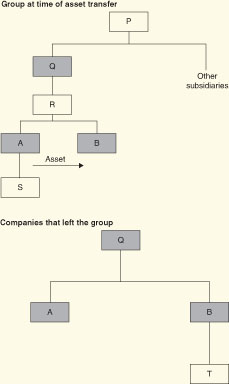Revenue & Customs Brief 59/08
H M Revenue & Customs
Capital Gains degrouping charge – response to enquiries following decision in Johnston Publishing (North) Ltd versus HM Revenue & Customs (HMRC)
This Brief outlines our view of what it means to be ‘associated companies’ for the purposes of the exception to the degrouping charge, following the Court of Appeal decision in Johnston Publishing.
Background
The case of Johnston Publishing (North) Ltd versus HMRC concerns the degrouping charge which may arise when a company leaves a group of companies at a time when it owns an asset that had been acquired from a fellow group company (Section 179 Taxation of Chargeable Gains Act 1992).
The Court of Appeal decision confirmed our view of the exception to the degrouping charge for ‘associated companies’ in Section 179(2): the transferor and transferee company are required to be ‘associated’ at the time of the intra-group transfer as well as at the time they leave the group.
Now that the Court of Appeal decision is final, we have received enquiries about how this decision affects its view of what it means to be ‘associated companies’ for the purposes of the exception.
Our view of what it means to be ‘associated companies’ for the capital gains degrouping charge
The question of what may constitute ‘two or more companies (that) by themselves form a group of companies’ for the purposes of Section 179(10) was not directly in point in the Johnston case and was not fully explored.
It is necessary to refer back to the basic definition of a capital gains group at Section 170 TCGA when considering whether any company(ies) other than the transferor and transferee must be present in the ‘sub-group’ of companies at the time that it leaves the group. We also consider that the question of whether companies are associated arises in respect of each potential degrouping charge and that regard must be had to the use of the words ‘by themselves’ in Section 179(10). Therefore, in this context, the ‘sub-group’ in point would comprise the minimum number of companies necessary to establish the required group relationship.
Thus, as noted in the decision, if transferor A and transferee B can only be considered to form a group by reference to some other company C at the time of the transfer then A, B and C must also form a group at the time they leave. That is the ‘sub-group’ to be considered.
This situation will arise, for example, where A and B are sibling subsidiaries of C.
We take the view that the use of the words ‘by themselves’ in Section 179(10) means that the presence, or absence, of any company(ies) other than A, B and such other companies that are required to identify a group relationship between A and B would not prevent S179(2) applying.
Example
- P is the principal company of a capital gains group. Q is one of its 100 per cent subsidiaries.
- Q has a 100 per cent subsidiary R which in turn has two 100 per cent subsidiaries A and B.
- A also has an 80 per cent subsidiary S.
- A transfers an asset to B; Section 171 means no gain or loss arises.
- Later, R is liquidated and its shareholdings passed up to Q.
- S is then transferred elsewhere in the group.
- B then acquires a new 100 per cent subsidiary, T.
If P sells Q, along with its subsidiaries at the time, to a third party then HMRC would consider that there will be no degrouping charge in respect of the asset transferred from A to B. This is because Q, A and B formed a group of companies by themselves when the asset transfer took place (A and B were both 100% indirect subsidiaries of Q) and at the time when Q left the main group (A and B were both 100% direct subsidiaries of Q).

Section 170(2) defines a group by reference to a principal company and its 75 per cent subsidiaries and Section 170(10) provides that a group remains the same while the principal company remains the same. Applying these to the provision at Section 179(10), we would expect the sub-group to remain defined by reference to the same company from the time of the asset transfer to the time the companies leave the group.
We will update page 45,456 of the Capital Gains Manual to state that the view expressed there has been confirmed by the Court of Appeal. Our interpretation of what it means to be ‘associated companies’ will also be added to the manual.
